You are here
History of Turkmenbashi.
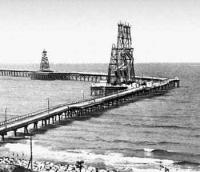
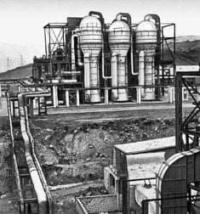
History of towns of Turkmenbashi and Krasnovodsk.
"History does not tolerate vanity,
Her national path is difficult.
Its pages, covered in blood,
You can't love with a thoughtless love,
And it’s impossible not to love without memory”
Sights of town of Turkmenbashi.
History of town of Turkmenbashi.
The town arose as a fortress near “Kyzyl-su”, which means “Red Water”, founded in 1716 during the expedition of Alexander Bekovich-Cherkassky along the eastern coast of the Caspian (“at the mouth of the Uzboy”).
Up to 3,000 people, 6,000 horses, a large number of camels took part in it. Despite the fact that Bekovich-Cherkassky sent ambassadors to the Khan of Khiva Shirgazi, that he was the ambassador of the Russian state, the latter attacked him 120 kilometers from Khiva.
As a result of the fighting, the Khivans suffered heavy losses, despite their multiple superiority. Russian troops were better armed and disciplined. Realizing that it would not be possible to win in a fair fight, the Khan of Khiva resorted to cunning.
He expressed regret for what had happened, and invited Bekovich-Cherkassky and his entire detachment to visit. The detachment was divided into five parts. Soon they were dealt with separately. Bekovich-Cherkassky himself was beheaded. So sadly ended the first major Russian expedition to Central Asia.
The events of 1717 did not become a big obstacle to the further expansion of relations between the Turkmens and Russia. In 1719 and 1726 new expeditions were equipped, as a result of which the first scientific map of the Caspian Sea was created.
In the second half of the 18th century, the Russian state sent expeditions to the Turkmen coast of the Caspian Sea several times. In 1773 and in 1781, expeditions led by S. Gmelin and Count M. Voinovich were on Cheleken Island.
They emphasized that the Turkmens of the coast received their people cordially and friendly. In 1801 - 1802, representatives of the Turkmens of Mangyshlak arrived in St. Petersburg with a request to accept them as subjects of Russia.
In May 1802, Alexander the First by a special decree announced the acceptance of the Turkmens of Mangyshlak under the protection and citizenship of Russia. In 1811, part of the Turkmens of Mangyshlak moved to Astrakhan, where their ancestors live to this day. According to the 2002 census, about 2,200 Turkmens lived in the Astrakhan region.
Expeditions are organized in 1819 - 1821, 1832, 1836. In 1836, the Maslakhat of the Caspian Yomuds took place in Esenguly. It was attended by 118 representatives, selected from approximately 180,000 inhabitants of the region. After a general exchange of views, it was decided that it was necessary to ask Russia for protection.
In 1859, an expedition was organized to explore the eastern coast of the Caspian Sea, as well as to select a site for the construction of a fort. The Krasnovodsk Bay was examined in detail, depth measurements were made.
Turkmenbashi was finally founded in 1869 by a Russian expedition led by Lieutenant Colonel Nikolai Grigoryevich Stoletov. Exactly 140 years ago, in the month of October, the Russians went to the open sea and headed exactly here to create a town on the coast of the Caspian Sea.
But by chance, during their voyage, there was a strong storm, and all the ships were scattered across the sea. Therefore, each vessel arrived in the Krasnovodsk Bay at different times. The first moored in Muraviev Bay on October 31, the second on November 3 and the third on November 6.
And for this reason, the date of the founding of the city of Krasnovodsk is a controversial issue: each of the three can be considered significant and chosen as the birthday of a new wonderful city in Turkmenistan.
Here, on the wild coast of the Krasnovodsk Bay, it was decided to build a fortress - a trading post. This bay seemed to the builders the most favorable location for the new city, since it almost never freezes and is protected from strong winds on all sides.
Even under Peter I, these places were examined and described by the associates of the leader of the first expedition, Prince Bekovich-Cherkassky. In a new place, a new fortress and a fortified fort were laid. To date, only the blockhouse of the battery has remained from it, where the local museum is now located.
Like many other centers of the state, Krasnovodsk owes its origin to the Russians who occupied this Central Asian territory. So, the sailors who landed on the shore began to build here not just a settlement, but a whole system of trade, economic and cultural relations with the local Turkmen tribes.
The fortification had a crownwork, was surrounded by a moat and a rampart. They were armed with guns. The garrison numbered up to 1000 people, but the death rate from disease was very high. The commandant of the fortress was Colonel von der Wieden.
In 1869, under the leadership of Colonel Nikolai Stoletov, the fortified fort of the Russian army (UFRA) Krasnovodsk was re-founded. Now, at the location of the fort, there is the village of Kenar (part of the city of Turkmenbashi).
The place where Krasnovodsk was founded was called Shaga-dam. The fort was used as a base for operations against the Turkmen nomads and for campaigns against the Bukhara and Khiva khanates. The Trans-Caspian region was formed, Krasnovodsk was its center before the construction of Ashgabat.
It was a small town inhabited by Russian military and officials, as well as merchants - Persians and Armenians. In 1870 - 1872 several expeditions were organized from Krasnovodsk deep into the Turkmen lands.
In 1874, the Transcaspian military department was created, the center of which became Krasnovodsk. Earlier in 1873, the Krasnovodsk bailiff was created. On the basis of the department in 1882, the Transcaspian region was created.
In June 1880, the construction of the first railway in the history of Turkmenistan began. The main line started from the shore of the Mikhailovsky Bay of the Caspian Sea and already in September 1881 was brought to Kizylarvat.
Krasnovodsk becomes a commercial sea port. Being an important transshipment point for goods, it is turning into the "gates of Central Asia." In 1908, the number of workers in the city reached 1.5 thousand people. In 1913, about 1 million tons of cargo was transported along the Trans-Caspian Railway.
By 1913, 7,000 people lived in Krasnovodsk. The ethnic composition of the population, both at that time and later, was variegated - Russians, Persians, Tatars, Poles, Azerbaijanis, Kurds, Kazakhs. Not many Turkmen lived, mainly in the nearby auls.
The city has trading warehouses, a bazaar, hotels, port facilities, offices of companies and communities, including oil production. In 1917, after the October Revolution, power in the city passes to the Bolsheviks. In July 1918, the Right SRs and Mensheviks seized power as a result of a coup. In February 1920, the Red Army captured the city again.
In the 1930s, in Krasnovodsk, as in all of Turkmenistan, there was a rapid growth of industry. In 1939, 21,000 people already lived in the city. The development of the city required qualified specialists. Due to their influx, the population of the city grew.
In 1943, during the difficult years of the war, the first production was produced by the Krasnovodsk oil refinery. The country at that time especially needed oil products. In 1940, the TSSR already produced 540,000 tons of oil per year.
In the 1950s and 1960s, Krasnovodsk became a major industrial center of Turkmenistan. Oil refining, food industry, production of building materials, energy industry are developing here. In 1972, 51,000 people lived in the town. Krasnovodsk has a pedagogical and medical school.
In 1989, the population of the seaside town reached 58,900 people. It should be noted that in the 1970s and 1980s, population growth slowed down significantly. In Krasnovodsk, even then, trends towards an outflow of the population to Ashgabat and the central regions of the USSR became clear.
Until 1987, the city was the administrative center of the Krasnovodsk region, which was subsequently abolished and re-created in January 1991, but with the center in the city of Nebit-Dag. Since 1992 it has been renamed Balkanskaya.
In 1993, the city was renamed in honor of the President of Turkmenistan - Turkmenbashi. In the 1990s, there was a strong outflow of residents to the republics of the former USSR and Ashgabat. According to the 1995 census, Krasnovodsk is the only settlement in Turkmenistan where Russians made up the majority of the population (32.8%).
Krasnovodsk continued to be one of the most multinational cities in Turkmenistan. Numerous communities of Azerbaijanis, Armenians, Tatars, Ukrainians, Germans, Lezgins, Uzbeks, Kazakhs were represented here.
In 1999, the five millionth resident of Turkmenistan was born in the city. In 2005, the city has 68,300 inhabitants. Krasnovodsk is in many ways a unique city in Turkmenistan. And it's not just its coastal location. It is the only one where whole quarters have been preserved, built up with buildings that are a hundred or more years old.
The architecture of the city is also original, which has certain Caucasian features, somewhat similar to Baku. As before, and now the main problem of the city is water supply. Despite the fact that a lot of work has been done in this regard, a similar problem continues to occur. In the second half of the XXth century, Krasnovodsk grew significantly in size. New microdistricts - Cheryomushki, as well as residential areas to the west of the city were built.
However, over the past 20 years, not a single new multi-storey residential building has been built in the city, but there are logical explanations for this, including due to the strong outflow of the population during this period.
An important problem for the city is ecology. This issue is especially relevant, due to the proximity of the city complex and thermal power plants. In 2010, large-scale work began to clean up the city port from old ships. There have been dozens of the latter.
In 2000, the first two modern hotels, Turkmenbashi and Serdar, were built in Krasnovodsk and its environs. In 2007, President of Turkmenistan Gurbanguly Berdimuhammedov put forward the idea of building a National Tourist Zone in the town of Avaza, 12 kilometers west of Turkmenbashi.
During these 4 years, 10 new hotels, several rest houses, two children's health camps, cottage rest houses, cafes, amphitheaters and other facilities have already been built here. Among them is a seven-kilometer canal.
In the future, it is planned to build an aqua park, an indoor ski complex, parks, hotels and other tourist facilities. There are plans for the construction of a new city, announced by the President of the country in 2008.
A big event for the city was the opening of a new international airport that meets all requirements, with a runway of almost 4 kilometers. Currently, international and local flights are operated from the airport, in particular to Istanbul and Moscow.
This year, a major transport interchange was opened, as well as new highways. One of the oldest Orthodox churches, founded in 1895, is located in the city. Walking through the streets of the old part of the city, you immerse yourself in the peculiar atmosphere of Krasnovodsk of the past, such as it was at its inception.
Despite the fact that many buildings are a hundred or more years old, they are all functional. Many are still residential buildings.
Geographical coordinates of town of Turkmenbashi: N40°00'21.72" E52°59'21.54"
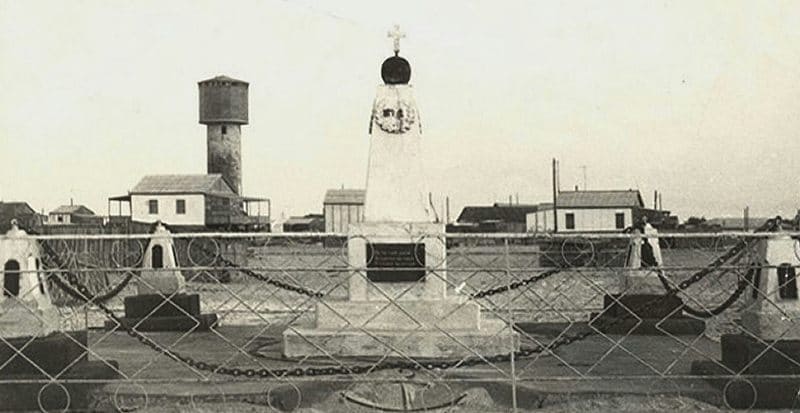
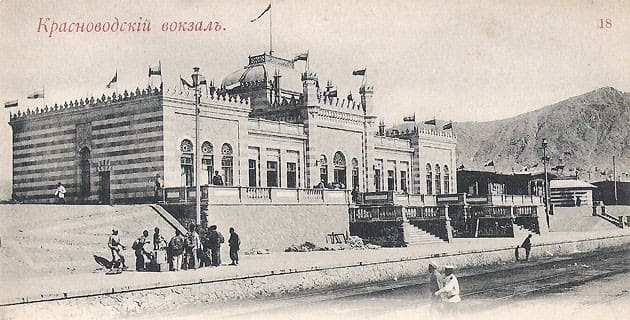
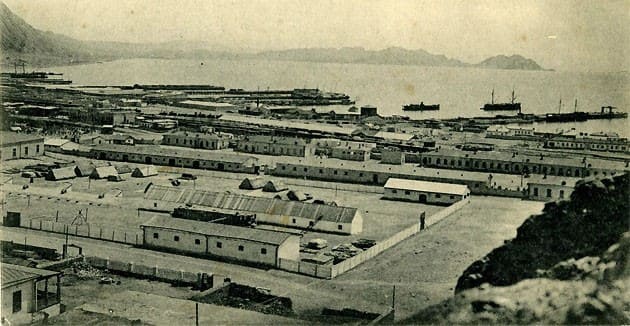
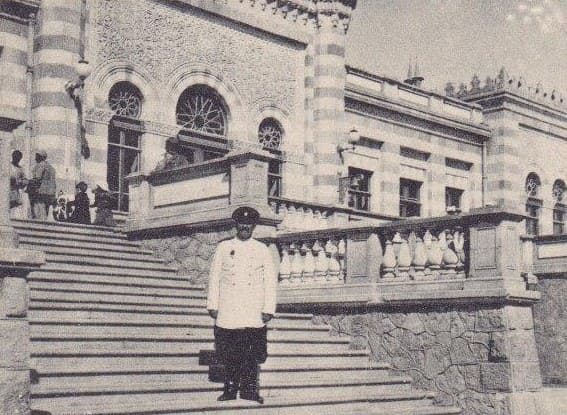
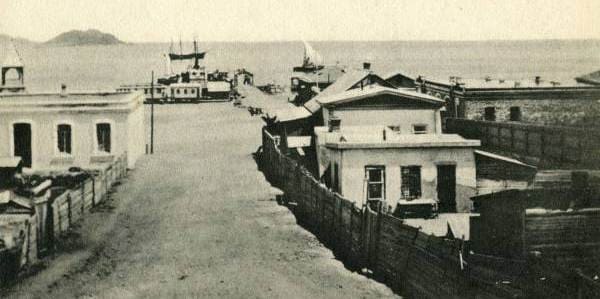
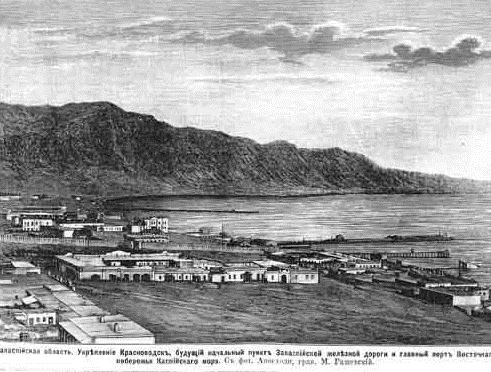
Authority and photos:
http://asgabat.net/novosti/ispolnjaetsja-142-goda-s-momenta-osnovanija-goroda-turkmenbashi-krasnovodsk.html
http://www.caspianmonitoring.ru/







